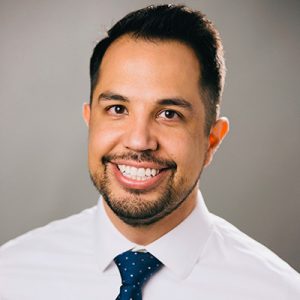Raymond L. Moody, assistant professor of human development and family sciences, is investigating an understudied link between drug use and HIV vulnerability in Hispanic and Latino sexual minority men (HLSMM): stigma.
His work has been awarded a five-year, $950,000 K01 Mentored Career Development Award from the National Institute on Drug Abuse.
Moody’s project seeks to identify the sources of social and internalized stigma in the lives of HLSMM who use methamphetamine. The research team hopes that better understanding stigma and risk factors will accelerate progress toward ending the epidemic of HIV among HLSMM.
“Methamphetamine use is one of the most significant predictors of HIV vulnerability among sexual minority men,” Moody explains. Citing his collaborator at the City University of New York, Christian Grov, he adds, “As many as one in three new HIV infections [among sexual and gender minorities] are among people who use methamphetamine.”
Tracking Stigma to Its Source

In his work as a clinical psychologist, Moody has long focused on the internalization of stigma — “these negative beliefs [people have] about themselves related to characteristics around their sexuality or around their drug-using status, and the consequences of internalizing those beliefs.”
Negative beliefs about one’s own sexuality or drug-using status can be destructive, leading people to engage in riskier behaviors, like unprotected sex and further drug use. Stress and drug use can also both increase inflammation, which is one of the biological risk factors for HIV. And finally, Moody points out, structural and social stigma can bar individuals from accessing the stability needed to recover from addiction, perpetuating the cycle.
“I’ve been working with individuals who use drugs for a long time, and I’ve witnessed in my clinical work as well as through my research the negative impacts that stigma has on the quality of support, access to resources, and quality of life that individuals have,” Moody says. “This is both while they’re using, and even beyond, if they enter a period of recovery, because the stigma tends to carry forward.”
The mix of internalized shame, social stigma, and addiction can create the perfect storm for HIV vulnerability and transmission. Research like Moody’s seeks to break open these harmful cycles and identify areas for better support.
A New Approach
Existing interventions are often designed to help people cope with stigma, rather than tracking stigma to its source and considering intersecting systems of oppression.
“That puts a lot of responsibility on the individual,” Moody says.
In contrast, he hopes his research could contribute to a solution that improves health outcomes on multiple levels: a “multifaceted” intervention that not only helps people cope with stigma, but also helps steer community-level and policy interventions.
To do this, he is attempting to understand where stigma comes from, and how it manifests in the health outcomes of HLSMM, by mapping their social networks — “their family members, the people they hang out with, the people they may be using drugs with, as well as their healthcare providers,” he says.
This study will follow a social-ecological model, considering how an individual is impacted by their own personal history, their close personal networks, their communities, and their broader society. Interviews from participants will help illustrate where harmful narratives originate and how they are internalized.
The study will involve two parts. For the first stage, Moody will be analyzing data from an existing cohort of more than 5,000 sexual minority men across the United States compiled by Grov. This will allow him to understand how state-level policies may be impacting HIV transmission and methamphetamine use across the country.
For the second, he will recruit new participants for survey research. These participants will also receive at-home collection kits for inflammatory markers, allowing researchers to understand how biological factors may be impacting their HIV susceptibility.
In addition to Grov, Moody is collaborating with Lisa Eaton ‘09 Ph.D., UConn HDFS professor; Dustin T. Duncan at Columbia University; Adam Carrico at Florida International University; John Schneider at the University of Chicago; and Carlos E. Rodríguez-Díaz at Boston University.
The NIDA Career Development Award is a significant investment in an early-career researcher, and Moody is enthusiastic about using the funding and mentorship “to propel my research in a new and exciting direction.”
“To be at the start line of this project is so exciting,” he says.



